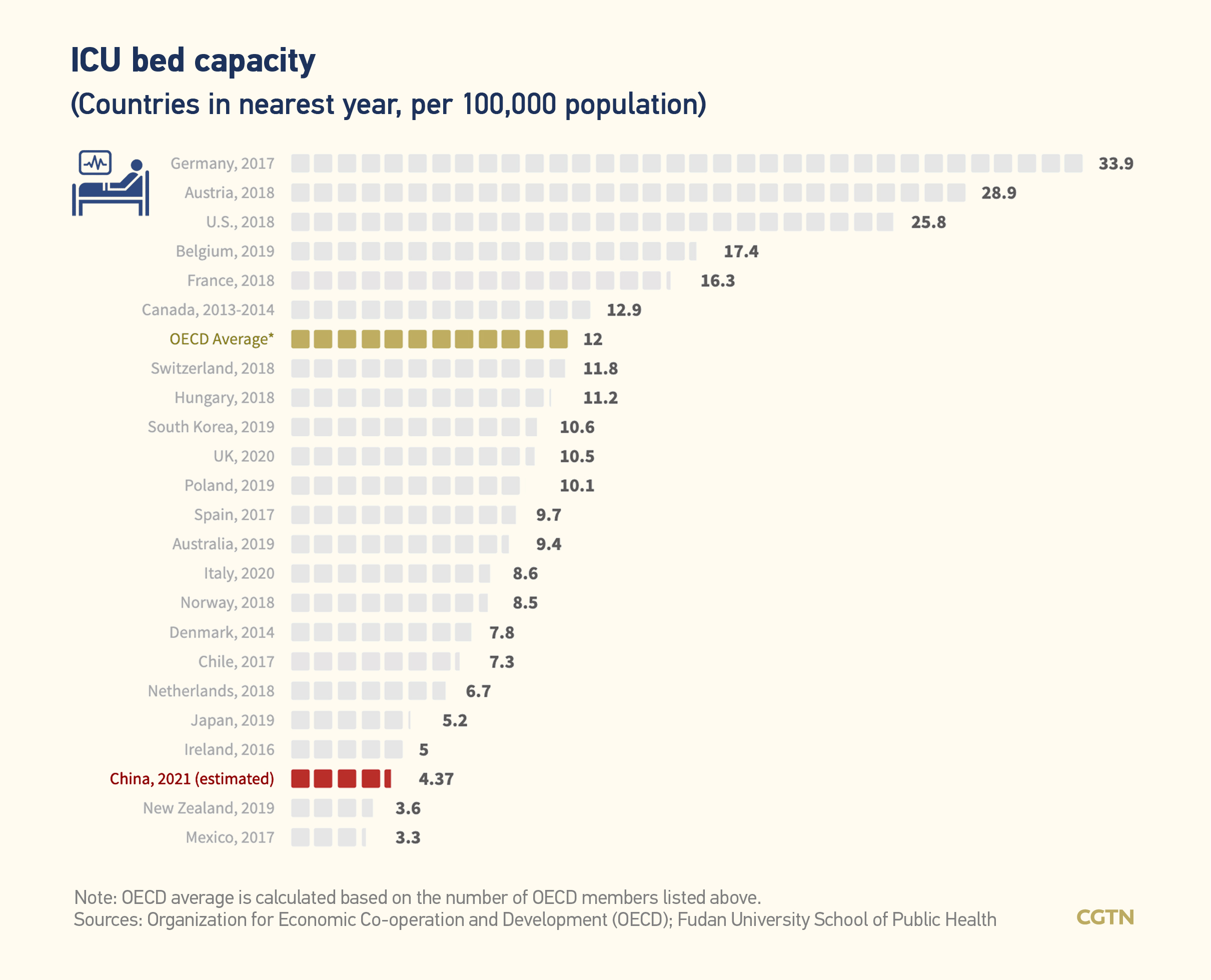The COVID-19 pandemic is "most certainly not over," the head of the World Health Organization (WHO) warned at the opening of the 75th World Health Assembly (WHA) on Sunday, as reported cases are still increasing in almost 70 countries in all regions.
The relatively mild Omicron variant has prompted many countries to lower their guard, ease restrictions and rely on just vaccinations.
China's "dynamic zero-COVID" strategy, which refers to a slew of measures including mass testing, extensive contact tracing and snap lockdown to swiftly stamp out new outbreaks when they occur, seemed out of place and has caused many controversies internationally.
But why does the Chinese government choose to stick with the stringent policy? What are the consequences if the country drops it without any intervention? Let's first take a look at a couple of data.
The vulnerable groups
It's commonly known that coronavirus poses significant challenges for older people. According to data from the U.S. Centers for Diseases Control and Prevention (CDC), the death rate is 65 times higher in those who are over 65-year-old and 330 times higher in those above 85-year-old compared with 18 to 29-year-old.

China has 267 million elderly people aged over 60, with 260 million living with underlying health conditions. What's more, the current vaccination rates for the elderly are not high enough.
A recent study conducted by scientists in China and the United States predicted that China would risk over 1.5 million COVID-19 deaths if it drops its zero-COVID policy without any safeguards, such as ramping up vaccination and access to treatments.
"The level of immunity induced by the March 2022 vaccination campaign would be insufficient to prevent an Omicron wave," the authors wrote, projecting that peak demand for intensive care would be 15.6 times the existing capacity, causing about 1.5 million deaths.
Meanwhile, the research suggests a focus on ensuring vaccine accessibility and anti-viral drugs while maintaining the implementation of non-pharmaceutical interventions to prevent the health care system from collapsing.
Insufficient medical resources

Indeed, China's medical resources are relatively scarce compared to its overall population and some developed countries.
According to a paper published in the Chinese Health Resources journal last July, the country was estimated to have 4.37 intensive care units (ICU) beds per 100,000 of its population in 2021. While the number for Germany in 2017 and the U.S. in 2018 were already 33.9 and 25.8, respectively.
Doctors, nurses and other health professionals, which are part of medical resources, also played the role of first responders when the virus came. However, the number of doctors and nurses here is far from enough for the country to deal with large outbreaks.
Countries that spend a lot on health, such as Norway and Switzerland, have relatively high numbers of doctors and nurses. In contrast, China was estimated to have only 1.64 practicing doctors and 2.54 nurses per 1,000 population.

Despite the reduced severity per infection, the massive wave of highly transmissible Omicron variant means that hospital admissions will rise to twice or more than the number of COVID-19 hospital admissions of past surges in some countries, according to the research conducted by the Institute for Health Metrics and Evaluation, University of Washington, this January.
The study, published in Lancet, indicated that large numbers of health workers are testing positive and are required to quarantine during the Omicron wave, which puts double pressure on hospitals.
China, with unbalanced regional development and insufficient medical resources, would see widespread infections with a huge amount of severe cases and deaths if the strict virus control measures were loosened prematurely, experts estimated.
"'Dynamic zero-COVID' does not mean 'zero infection,' said Liang Wannian, head of the expert team on COVID-19 response and disposal at the National Health Commission, during a press conference.
The gist is to cut off the spread of new infections as soon as possible instead of just letting go of the situation and allowing it to run out of control, he explained.
It has brought the country a precious time window for the future, and the country must "seize the opportunity" to develop more drugs and vaccines, said Liang in a commentary published in the official journal of China's CDC.
Read more: China will stick to 'dynamic zero-COVID' policy: health authorities
Chart of the Day: Shanghai attains zero community spread of COVID-19

